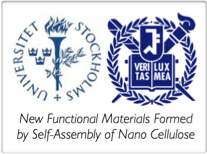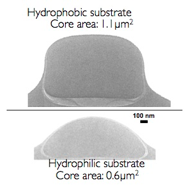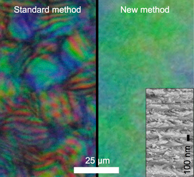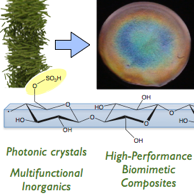Liquid Crystalline Soft Matter
New Functional Materials Formed by Self-Assembly of Nano-Cellulose
Bilateral research project between two Swedish partners at Stockholm University (Prof. Lennart Bergström) and the Royal Institute of Technology (Prof. Lars Berglund) and three partners at Seoul National University (Prof. Giusy Scalia, Prof. Yuanzhe Piao and Prof. Lagerwall), co-funded by NRF and STINT, October 2011 - September 2013.

The prime aim of this project is to develop new and technologically attractive methods of using cellulose, the most abundant material on earth, as a low-cost renewable resource for novel nanostructured functional composite materials. We will work with nanocrystalline cellulose (NCC), or nanowhiskers, which are transparent, water soluble nanorods with diameter of about 10 nm and length in the micron range. Like many other cellulose derivatives these new nanorods self-assemble into long-range ordered helical arrangements of chiral nematic liquid crystalline (N*) type, with periodicity close to the wavelength of light. Such phases exhibit attractive photonic properties and the superior mechanical properties of nanowhiskers provides strength to the material. We will employ the NCC-based N* phase as a template for organizing other functional nanoparticles, e.g. carbon nanotubes or magnetic or semiconducting nanoparticles, but we will also explore new modes of controlled self-organization of NCC with the aim to produce useful composite fibers, mats or films. We will also employ electrospinning for creating nano- to microscale fibers based on the NCC nanorods, eventually functionalized with additional nanoparticles or other polymers. By hydrolysing silica precursors added to the systems and then removing the organic components via calcination the structures can be transferred into silica films with the same ordered nanostructure.
Pages for project members are found here.
 Back to research overview map.
Back to research overview map.


